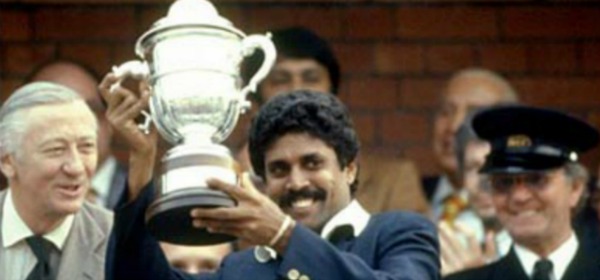
For passionate sports enthusiasts, there are certain days that leave an indelible mark, resistant to the passage of time. Instead, as the years go by, these days find a cherished spot in the treasury of memories. June 25, 1983, holds that kind of significance for every Indian cricket lover of a particular generation.
On that day, London’s Sunday Times reported that it was a day “when cannon fodder turned cannon.” England cricket legend Denis Compton echoed this sentiment in the Sunday Express, describing it as the day when “the World Cup no-hopers stopped the Calypso kings in their tracks.”
The impact of this historic victory transcended social boundaries, becoming a personal and shared experience across classes. From government offices to bus stops, from cigarette shops to railway stations, the radio commentary became a collective activity. People could interrupt anyone with a transistor radio to get the latest score. Change was in the air.
In 1982, Doordarshan initiated national programming, and color transmission began the same year. The affluent urban population had the privilege of watching the 1982 Delhi Asian Games live on color televisions. Many others, like myself, followed the national team’s fortunes on the BBC World Service. I was familiar with Berbice and had celebrated the team’s victory at Old Trafford.
However, a victory in the final against Clive Lloyd’s formidable West Indies seemed like an implausible dream, as unlikely as Uruguay’s win over Brazil in the 1950 football World Cup final. I experienced a rollercoaster of emotions while listening to the radio commentary that evening. In a few weeks, video recordings of the Lord’s final were available for viewing in makeshift auditoriums at a price of Rs 5. I sat among a group of ordinary men in a smoke-filled room next to a coal depot, witnessing Srikkanth’s square-boundary shot off Andy Roberts, aptly described by Wisden as “a pistol shot.”
I watched with amazement as a confident Vivian Richards displayed a T20-like cameo in the era of 60-over ODIs. I gasped as Kapil Dev ran backward to take India’s most iconic catch ever. When Mohinder Amarnath trapped Michael Holding leg before, the room erupted in cheers, as if we were witnessing the game live.
Until then, the Board of Control for Cricket in India (BCCI) had largely overlooked ODIs. However, the cricket-loving public had been captivated by the shorter format of the game. Mihir Bose noted in his book “A History of Indian Cricket” that in September 1983, a wave of cricket frenzy swept across the country. India won both ODI matches against Pakistan during their tour, including the unofficial floodlit match in Delhi, the first of its kind in India. He observed that while large crowds flocked to these matches, there was a decline in interest for the subsequent Test matches.
This changing dynamic, with the audience’s enthusiasm for shorter-format cricket, their waning interest in Tests, and the expanding reach of television, forced the BCCI to reconsider its strategies. In the 1980s, hundreds of transmitters were installed across the country, extending television coverage to small towns and rural areas. Television became a must-have gadget for the middle-class households.
Significant changes were made to the team’s playing calendar. Between 1974 and 1983, India played approximately 5.5 games per year. However, between 1984 and 1989, the number skyrocketed to 19 games annually. Cricket on television emerged as a market rival to cinema.
Two months before the 1987 Reliance World Cup, Film Information, a trade magazine, noted that “no major film will be released during this period” due to the competition posed by cricket.
Following the 1983 victory, the gap between cricket and other sports widened. Football struggled to achieve notable success even at the Asian level during the 1980s. Hockey could boast of the 1975 World Cup victory and the 1980 Olympic gold, albeit in a depleted field. However, the humiliating 7-1 defeat against arch-rivals Pakistan in the Delhi Asian Games left a bitter taste.
With more astute administrators focused on the market, cricket utilized lucrative television deals to dominate the minds of sports enthusiasts, even in small towns and rural areas. With the advent of satellite television in 1991, TV deals eventually transitioned from rupees to dollars. The impact of cricket on TV would become evident in India’s subsequent World Cup triumphs.







